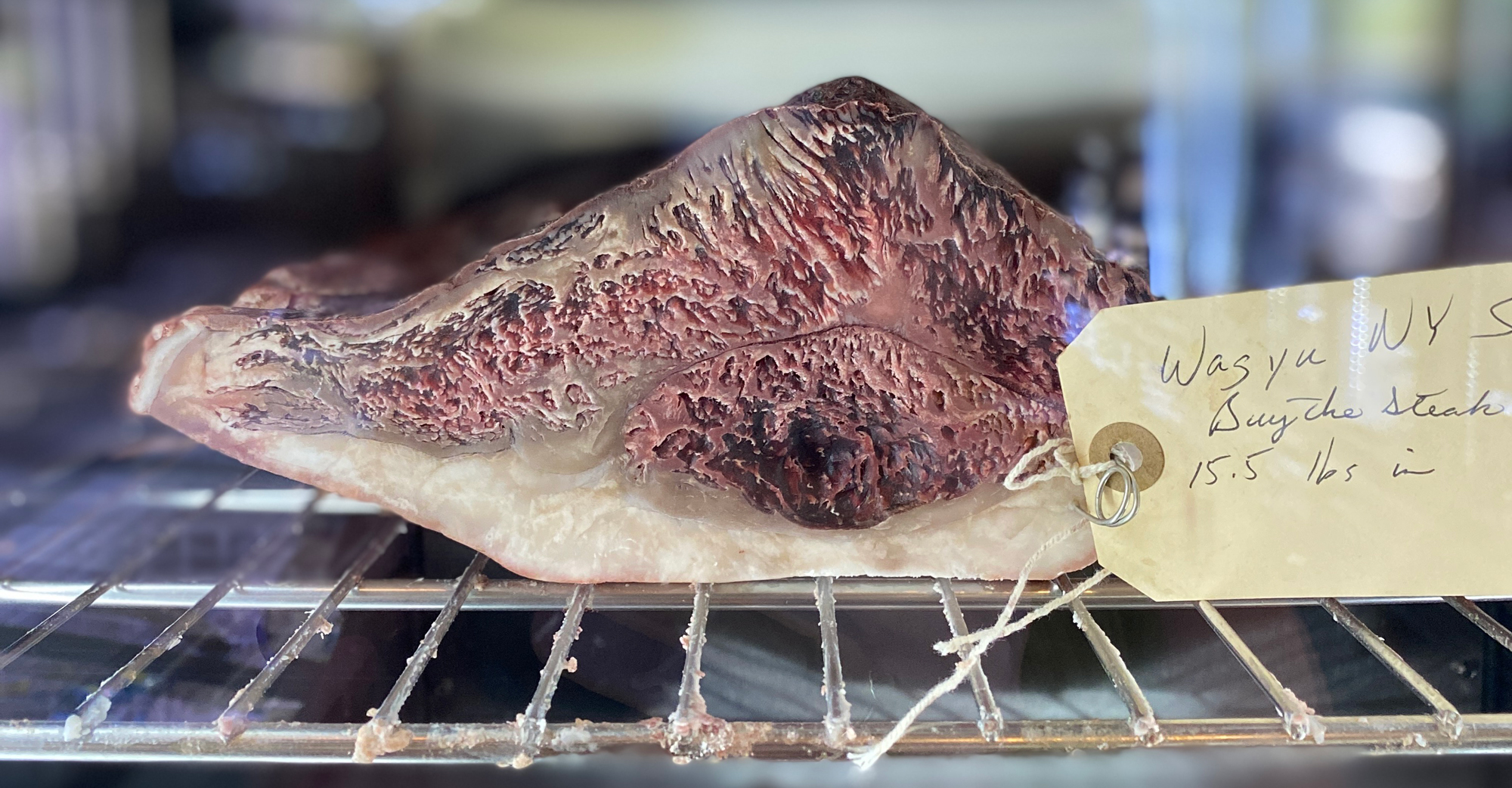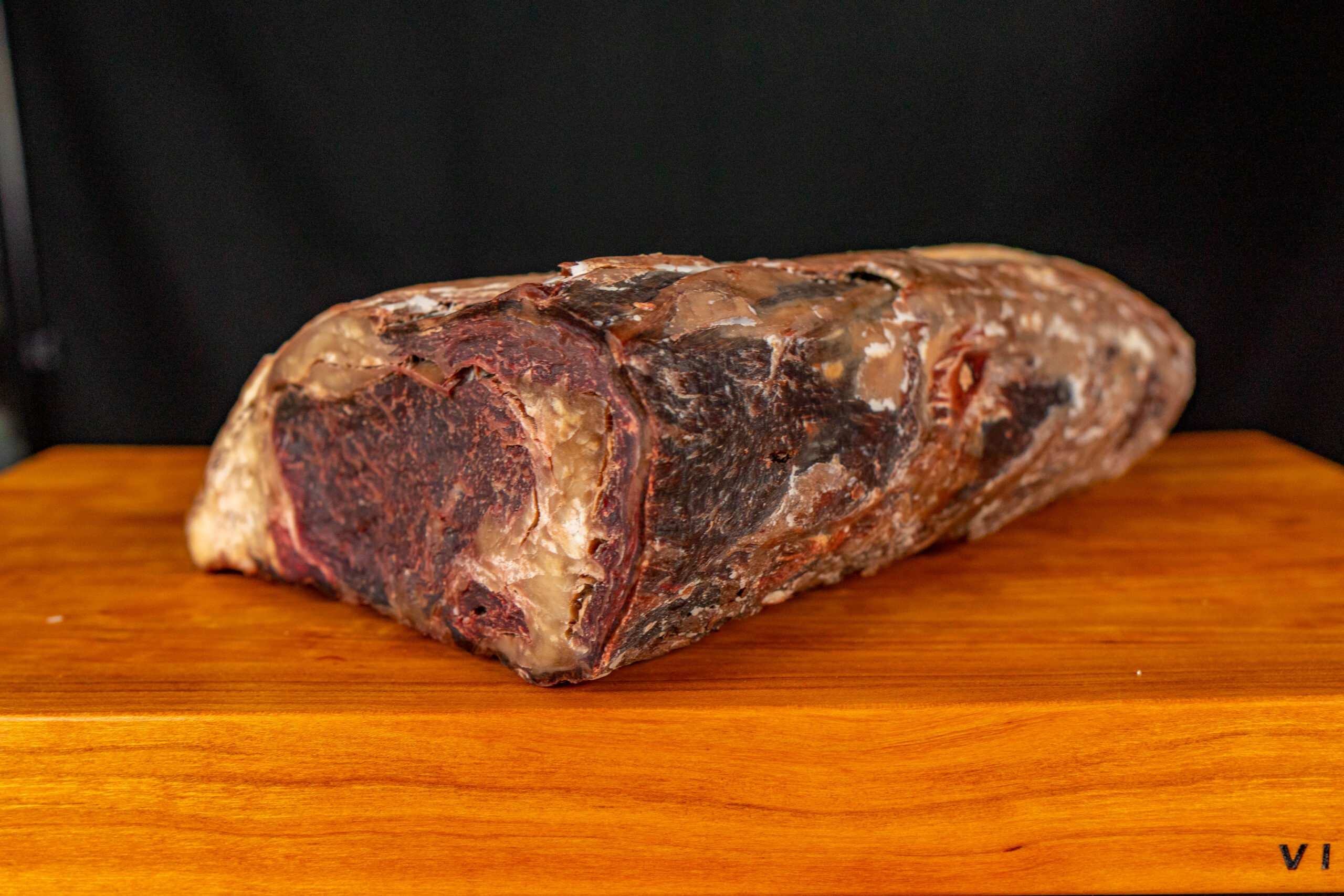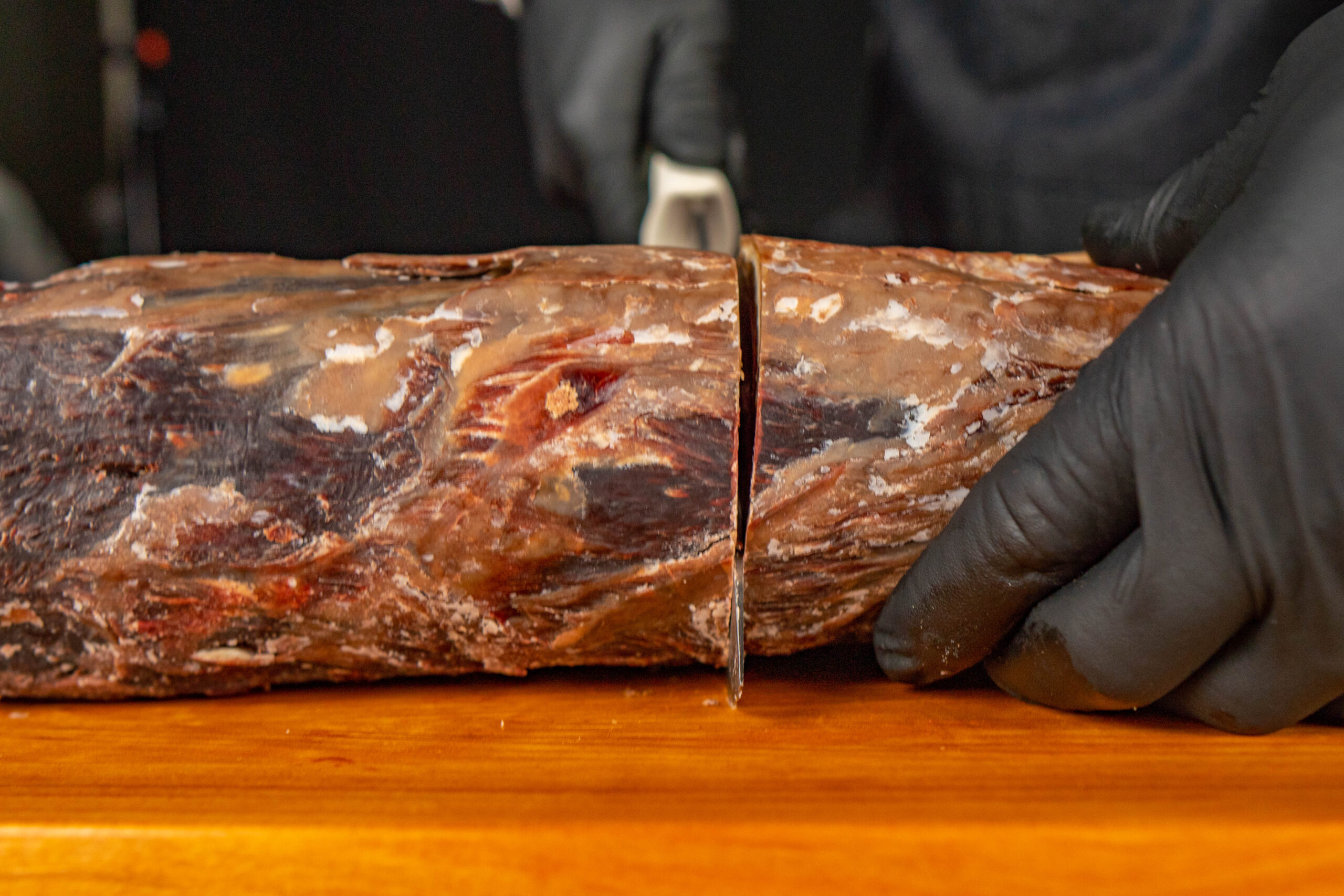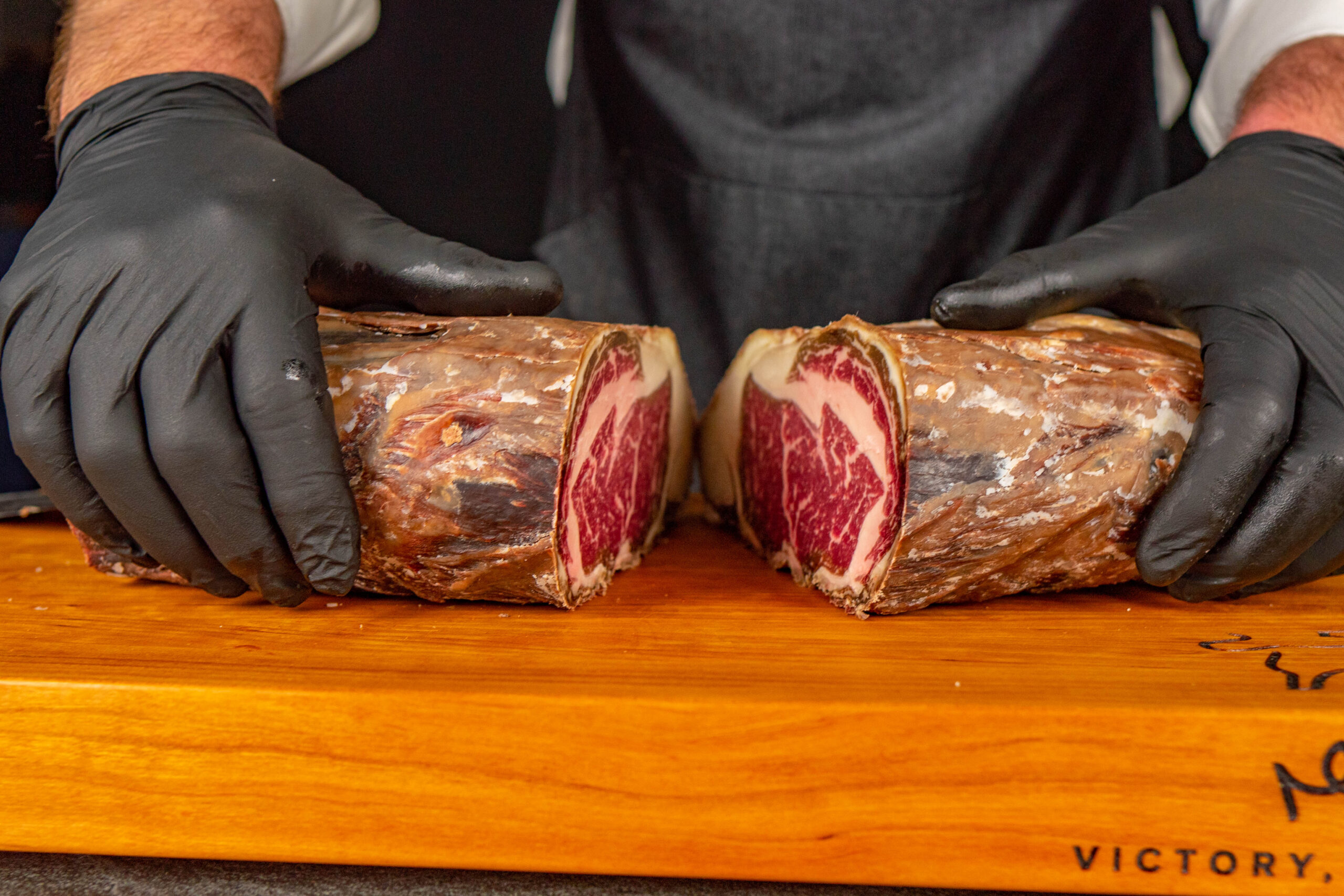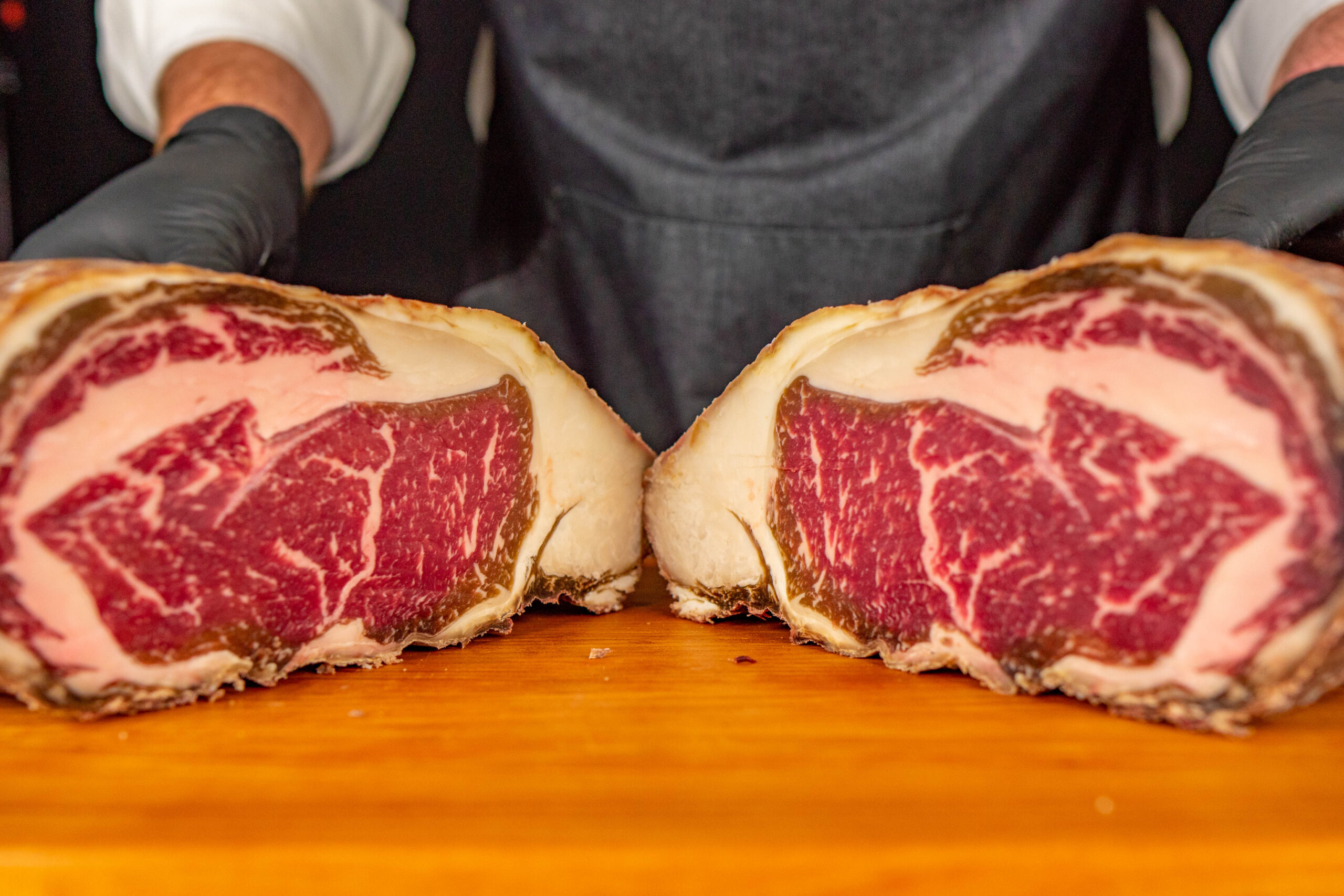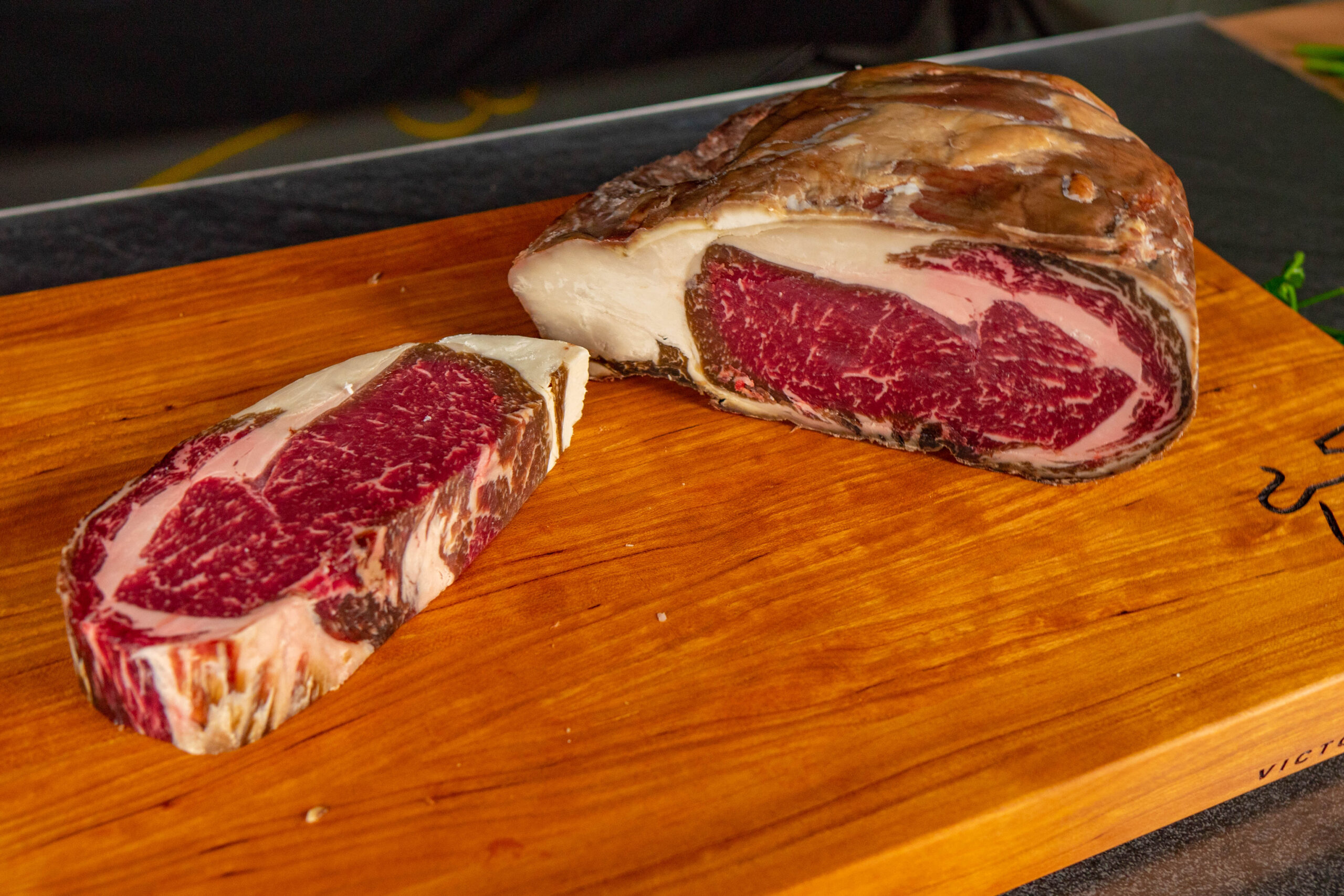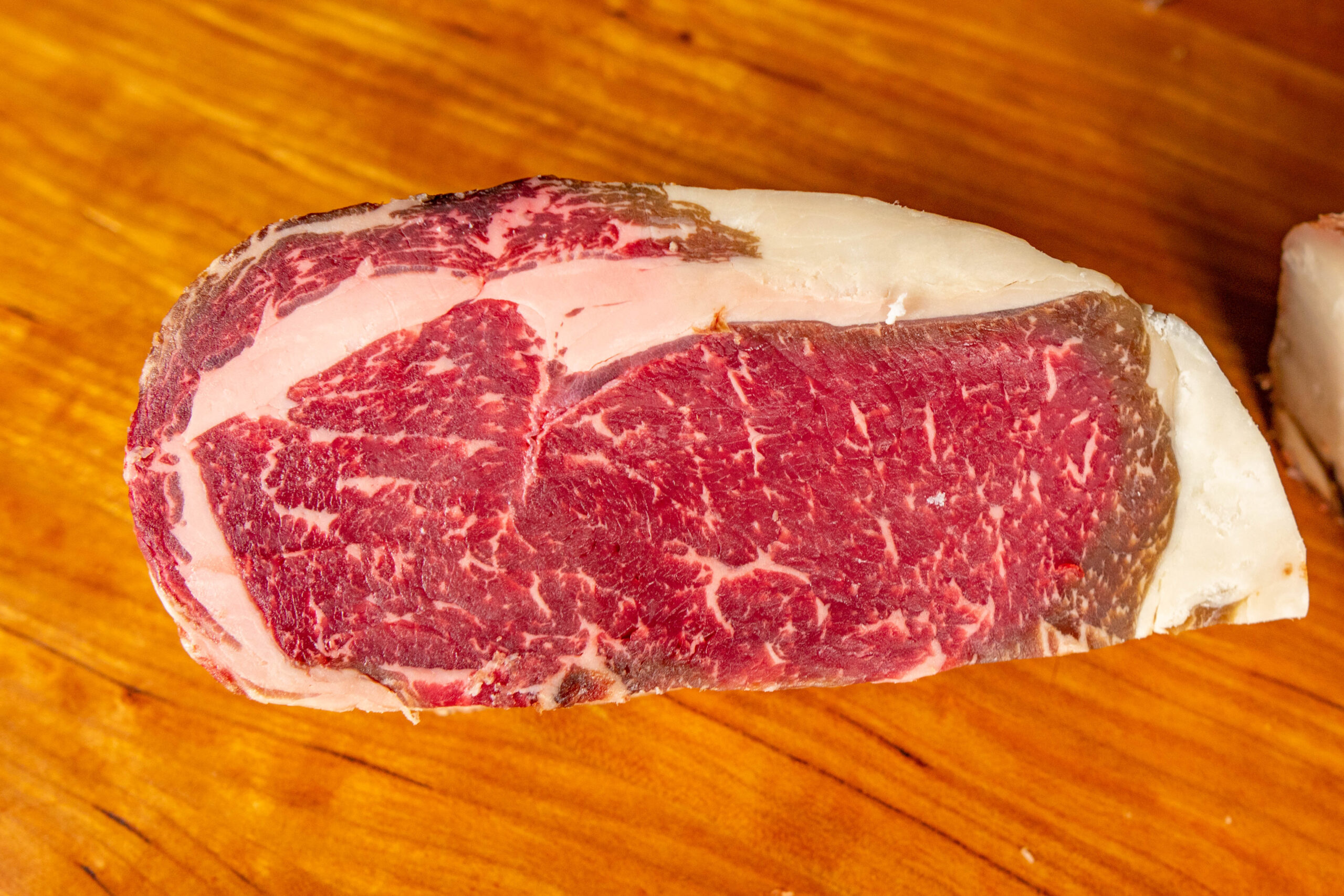At Champs Meat Market, Aging is a Beautiful Thing
When we think about delicious steak, it’s easy to default to the idea that fresh = flavorful. (We’ve already discussed how frozen can mean fresh and flavorful, too.) But what if we told you a deeper level of flavor can develop over time? That’s the core idea behind a process called dry aging.
Like wines and cheeses, red meat can be aged to enhance even the most seasoned foodie’s experience. Champs Meat Market Owner Christian Ockels sat down with us to explain the science and craft behind dry aging their premium steaks—and the best way to prepare them once they’re ready.
What is Dry Aging?
To put it bluntly: dry aging is a process of controlled decay. (We promise, it’s still edible and delicious!) Meat naturally has enzymes—or good bacteria—that when exposed to oxygen get to work breaking down the meat’s molecular structure. With Champs’ stainless-steel cabinets, every cut has a constant flow of fresh oxygen. This process leaves a denser, more tender, and flavorful cut of meat.
Is Dry Aged Beef Tastier than Non-Aged Beef?
Like so many food preferences, the answer to this question depends on who you ask.
“I wouldn’t say the flavor and texture is ‘better,’ but it is unique, beefier,” said Ockels. “The longer the meat is dry aged, the more of a ‘good funk’ you’ll taste. Any blue cheese lover will know what I’m talking about.”
He added, “It’s not an everyday item. The earthy, savory notes from a dry-aged steak are perfect for special occasions.”
What Types of Steaks Should be Dry Aged?
Ockel’s advice for the best cut to choose: “I’d say a bone-in ribeye rather than a beef tender for example. It has the fat exterior and the bone which are worked during the process rather than the meaty interior. After the aging process is complete and the pellicle or surface area is carved away, you have a substantial steak to enjoy,” advised Ockels.
How Long Does the Dry Aging Process Take?
At Champ’s, and as an industry standard, 30 days minimum is required. Between day 30-35, the texture will become denser. Day 45 is when the flavor profile begins to acquire that “good funk,” as Ockels put it. Some folks have aged their steaks over 60 days.
According to Ockels, “The longer it goes the stronger it gets. This is an acquired taste.”
What Should I Expect When I Pick up a Dry Aged Steak?
“Remember that steak you selected a few weeks ago? Well, you’re about to see something very different,” said Ockels. “It will be truly transformed.”
Over the aging process, the steak will lose moisture. When you pick up your steak, expect a smaller, denser cut of meat. Additionally, when your dry aged steak is ready, the friendly staff at Champs will trim the outer crust from the beef and even provide tips on how to cook it.
How Should Dry Aged Steak be Prepared?
“I always recommend cooking with indirect heat,” said Ockels.
This means the beef should be placed above or beside a heat source instead of directly over an open flame. When cooked with indirect heat, the beef can retain the moisture left in the meat itself, helping reduce the risk of overcooking that long-awaited dinner.
“But of course, everyone has their own way of cooking a steak,” said Ockels. “Once you get a little experience under your belt, you can change up your cooking style based on your preferences.”
Can I Dry Age My Own Steaks at Home?
The short answer: we wouldn’t. The stainless-steel cabinets at Champ’s contain the perfect temperature and humidity point to keep all that good bacteria happy. It also contains a UV light that kills any bad bacteria that could potentially develop when the bark or crust starts to encase the outside surface of the meat.
Select Your Own Steak for Dry Aging Today.
Visit us at Champs Meat Market. We can help you select the perfect steak for dry aging— and provide tips on how to prepare it to your liking.

